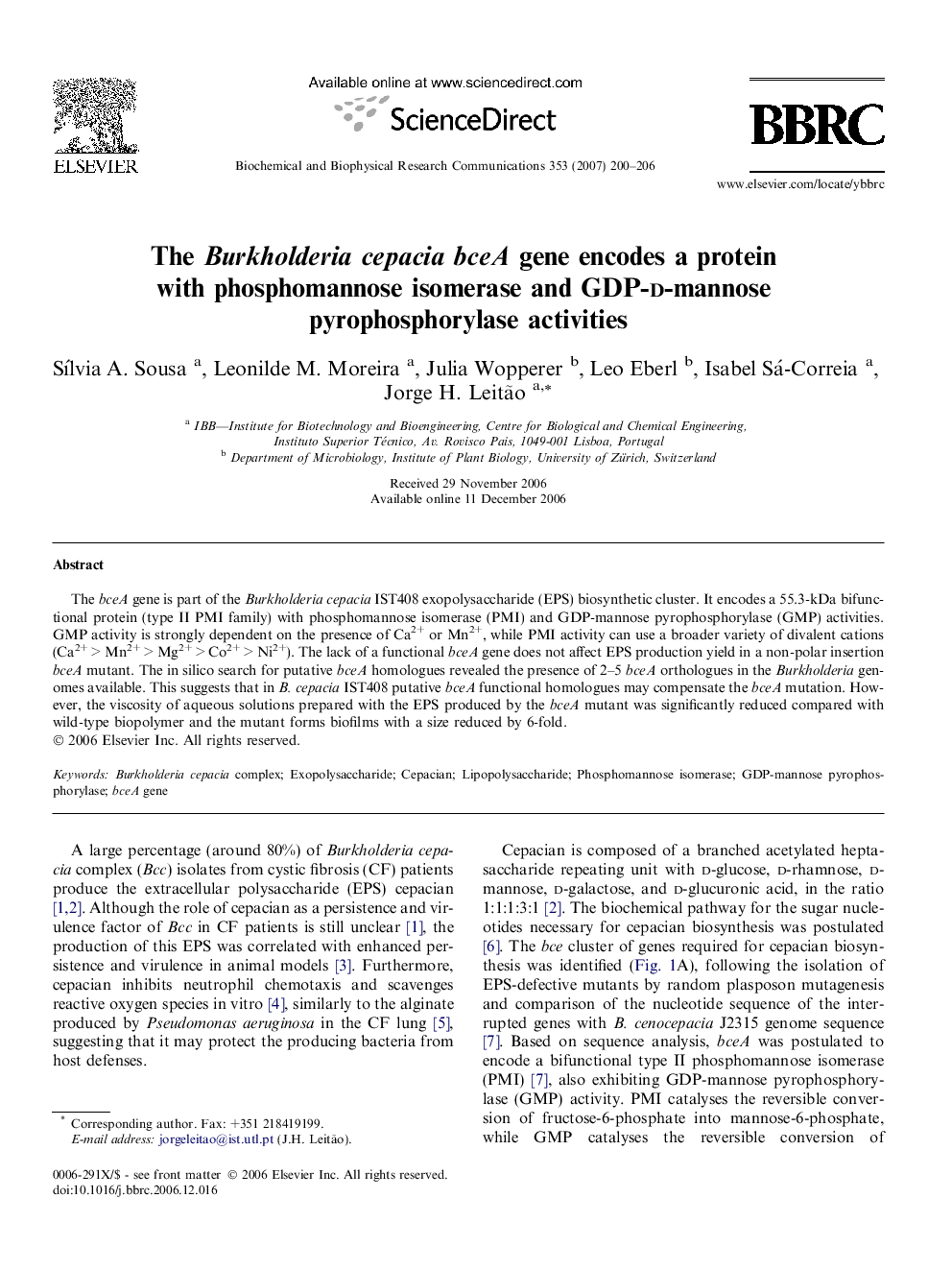| Article ID | Journal | Published Year | Pages | File Type |
|---|---|---|---|---|
| 1938076 | Biochemical and Biophysical Research Communications | 2007 | 7 Pages |
The bceA gene is part of the Burkholderia cepacia IST408 exopolysaccharide (EPS) biosynthetic cluster. It encodes a 55.3-kDa bifunctional protein (type II PMI family) with phosphomannose isomerase (PMI) and GDP-mannose pyrophosphorylase (GMP) activities. GMP activity is strongly dependent on the presence of Ca2+ or Mn2+, while PMI activity can use a broader variety of divalent cations (Ca2+ > Mn2+ > Mg2+ > Co2+ > Ni2+). The lack of a functional bceA gene does not affect EPS production yield in a non-polar insertion bceA mutant. The in silico search for putative bceA homologues revealed the presence of 2–5 bceA orthologues in the Burkholderia genomes available. This suggests that in B. cepacia IST408 putative bceA functional homologues may compensate the bceA mutation. However, the viscosity of aqueous solutions prepared with the EPS produced by the bceA mutant was significantly reduced compared with wild-type biopolymer and the mutant forms biofilms with a size reduced by 6-fold.
